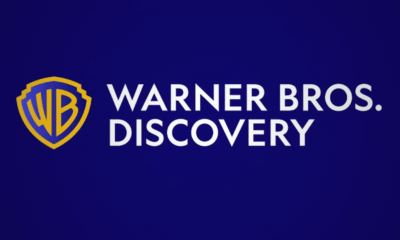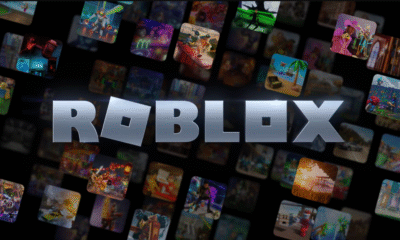Business
Future of Technology in Staffing and HR segment – Dinesh Goel, Aasaanjobs.com
As we step on to the year 2017 we realize that mobile technology has been had far reaching implications on all and sundry, including industries and sectors across the world and the HR segment is no exception. HR Managers and recruiters are increasingly looking to leverage technology in their processes, including mobile tech.
About 70 percent of job seekers today use smart-phones to look for jobs and the number is only growing with each passing day. Companies which do not have a mobile ready website or portal will fall behind if they fail to engage top talent. If we do a survey, we will surely find that there exists a huge number of HR managers out there, about 70% globally, who agree that technology is the future of staffing and they will use it at some point or the other. The question is not about how soon or how fast as a majority of recruiters are already making the most of it. Others who are not doing so should start doing it now.
Many companies are currently using social media (around 60%) in their recruitment efforts to hire smart, tech-savvy people. Those which are not using will soon do so as there are no ways out in these times of rising economic volatility and shortage of the right talent. Companies that embrace technology now will stand out among its competitors and will be seen as innovative and forward thinking by stakeholders and potential employees alike. Jobvite found in a 2015 survey of recruiters that employers using social media got a significantly higher quality of applicant.
Social media portals like Linkedin etc are being used widely to conduct background checks of potential employees. Similarly, technologies such as video conferencing can play a huge role in bringing down time wastage, cost and improve the quality of hire, if done efficiently.
Managed Services in staffing is another trend pretty strongly visible now
Managed services is the practice of outsourcing on a proactive basis management responsibilities and functions, including HR and a strategic method for improving operations and cutting expenses. Going by this parlance – Managing multiple contract types within an organization can sometimes look like a herculean task for the HR team. An efficient Managed Service can take much of the load away. A managed service provider can then help HR people to build the right kind of workforce which in turn further leads to a host of benefits. Attaining the right mix of part time and full time employees allows organization develop a more proactive approach to talent – bringing on board the right skills for the right project, complementing the existing team and cutting down cost by lowering overheads. Such managed services can also provide access to new markets, specialized skills and new solutions such as employed consultants and crowd-sourcing.
There are a number of problems organizations face when managing large workforces especially with on-field roles like sales, data collection, delivery boys, etc. Some of them pertain to attendance, tracking their actions etc. There are technologies and services available today, such as managed services which help organizations meet such goals. Today, employers need a single platform which can unite tracking recruitment, productivity and payroll. As of now, employers use different platforms for all these needs and they need to be brought together in one cohesive platform, to boost efficiency.
Let us now look at certain technologies that are making inroads in the HR and recruitment space:
CRM and ATS: Many organizations currently use some or the other form of ATS or Applicant Tracking System and there are good reasons why it is so. ATS’s functionality includes documenting applicant records and associated hiring activity which is quite crucial for compliance purposes. ATS also help organizations to keep a track on a candidate’s recruitment history and contact information or academic/career history for both active and passive candidates, serving as a system of record that’s often the only place to find recruiting related information at many employers.
While information and data contained by ATS is extremely valuable, the problem with such data is that they become outdated pretty soon. When companies look for candidates who might be a good fit for the organization at a later date, ATS does a poor job. Here is where CRM (Candidate Relationship Management) comes in.
With the advent of CRM tech in talent acquisition, there will be a rise in the number of dedicated recruitment marketers whose responsibility will be to run targeted campaigns, grow leads and develop passive candidates who already have an established recruiting relationship with an organization.
Sourcing will become much more engaging than what it is now
Sourcing talent is easy –talented candidates can be found across job boards, social networking sites, CRM tools as well as portals. The problem is about engaging with them effectively.
Since it is easier to find a candidate, it is also easy for your competitor to find a candidate – this makes it very difficult to ensure that your job posting or ad is even read by the candidate you are targeting. Thus engaging with prospective employees has attained paramount importance. There are two ways to do it:
Number one is using algorithms or other technologies to do more sourcing and number two is involving hiring managers to carry out the entire hiring process – starting with identifying and sourcing of the right talent.
As recruiters delegate sourcing responsibilities they will have more time in hand to engage with their talent pool and building the relationship needed to transform a passive job seeker into an active one and ultimately the next employee.
Interviews will happen over the internet
All organizations irrespective of their size and scale are becoming more and more interconnected and global. Work is transcending boundaries created by culture, demography and geography. Every company today has multiple teams spread across multiple locations. This trend is further expected to grow manifold over the coming year.
Video interviewing technologies via tools such as Skype and Google Hangouts will become commonplace in times to come. Many would adopt targeted video interviewing software to recruit the right talent. 40% interviews are currently happening over video chat.
Big data in recruitment
Predictive analytics and big data will rule the hiring metrics in times to come. More refined metrics means getting a better understanding about existing bottlenecks, which recruiter is effective and who is not and which hiring method is working and which hiring method is not working. Metrics will change from transactional to strategic – employees will be judged on what real value their work is driving rather than mere numbers.
Disclaimer: The views and opinions expressed in this article are those of the authors and do not necessarily reflect the official policy or position of the publication







































